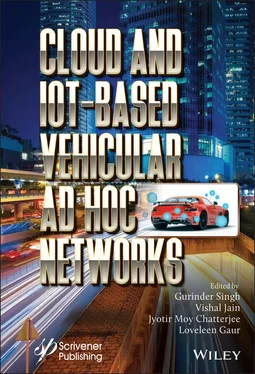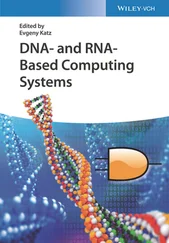Figure 3.2Implanted vehicle sensors in ITS [5].
Sensor alarms the operators about the fault occurrence in manufacturing units.
Sensor supports the operators to reduce interruption in production system.
Necessity of skilled and experienced manpower is less.
Better Product quality can be obtained.
Generally, the output is an electrical quantity and the input measure is a physical quantity and the sensors are used in traffic control and safety transportation, etc. To increase the drivers, passenger satisfaction, and safety, recently the manufacturing of vehicles implemented sensors [4]. Some sensors are installed to monitor and control the performance, vehicle position, efficiency and safety system. Normally, an average of 50–100 number of sensors are available in a vehicle. For a smarter vehicle, the number of sensors is more than 200 sensors per vehicle [5]. Based on the type of sensor application, vehicle sensors are categorized as safety, diagnostics, convenience, and environment monitoring [6, 34].
The following sensors are used in the Transportation Systems:
1 Safety Sensor: The purpose is to recognize accident hazard events almost in real-time and form the basis of safety systems.Example: Micro-Mechanical Oscillator, Speed Sensor, Camera Sensor, Inertial Sensor, Ultrasonic Sensor, and Proximity Sensors, etc.
2 Diagnostic Sensor: The purpose is to detect and support the real-time information vehicle performance and position.Example: Position and Temperature Sensor, Gas Sensor, Pressure Sensor, Airbag Sensor, etc.
3 Assistance Sensor: The purpose is to collect the data that helps for comfortable usage.Example: Gas Sensor, Humidity Sensor, Position Sensor, and Torque Sensor, etc.
4 Environment Sensor: The purpose is to offer drivers and passengers alert warning services and monitors the environmental conditions.Example: Pressure Sensor, Temperature Sensor, Distance Sensor, etc.
5 Traffic Sensor: The purpose is to monitor and improve the traffic conditions in specific zones.Example: Ultrasonic and Proximity Sensors etc.
3.4.1 Implanted Vehicle Sensor Applications
The proximity sensor is to detect the closeness of any object to a vehicle. The ultrasonic sensor is to convert the input signal into an electrical signal. The target object distance is obtained through emission of ultrasonic sound waves and threshold limit which alert the driver and to the processing unit. The vehicle parameter information like vehicle flow, speed, distance, temperature, pressure, position is calculated. This sensor has a high sensitivity to environmental effects. The electromagnetic sensors create an electromagnetic field around the bumpers and aware of the driver when an object enters.
Infrared sensor detects the energy generated by vehicles in the road surface objects. There are two types namely, Passive Infrared (PIR) and Active InfraRed (AIR) sensors or Light Emitting Diodes (LED) or Laser Diodes. The former detects the vehicles supported emission of infrared and collects the data. The later reflection time is obtained and data has been collected based on speed, vehicle position, traffic density, etc.
The anterior, side, and back portions of the vehicle are where the Radio Detection and Ranging (RADAR) and Laser Sensors are applied to determine the distance between obstacles and the sensor and to activate the brake that prevent potential collisions by using radio waves. Radar sensors are classified as the Doppler Radar system and Frequency Modulated Continuous Wave Radar. In Doppler Radar systems the frequency shift track density of vehicles and determine speed while the Frequency Modulated Continuous Wave Radar radiates continuous transmission power. RADAR has less weight that operates at different conditions and has a restricted field of vision and is highly susceptible to electromagnetic interferences. Generally, radar sensors are precise and accurate, installation is easy, increased multiple detection zones, and operating time is more.
Vehicle parameters such as vehicle speed, position, orientation, and velocity are determined by Inertial Navigation Systems (INS) which use gyroscope and accelerometer sensors. The purpose of the INS is to improve the accuracy, monitor the driver’s body movement in normal and abnormal conditions. Apart from these, night vision driver assistance system identifies long distance object on the road and detects objects such as human interventions, animals and other interventions.
3.5 Classification of Vehicle Communication Systems
With the emergence of the Internet of Vehicle every electronic device can communicate either with devices of the road network or Mobile devices of passengers/pedestrians. Figure 3.3shows the various categories of ITS Vehicle Communication Systems.
In-Vehicle Intelligence Communication: An interaction with versatile in-vehicle entities since the move of information and data from one element to dissimilar which collectively decides upon the vehicle’s behavior. It is also known as Intra Vehicle Communication Systems.
Vehicle–Vehicle (V2V) Communication: The objective of this type of system is to handle emergencies of vehicle with huge ongoing data. Example: Communication Sensors, Vehicles gadgets, ECU Modules and decision support systems. Figure 3.3ITS vehicular communications.
Vehicle–Infrastructure (V2I): A connection between the moving vehicle and the encompassing transportation framework. It trades data with the above elements to acquire a sufficient illustration and enables the immediate adaption to external requisitions. Example: Traffic lights, Traffic signs, Data centers, and Antenna, etc.
Vehicle-to-Cloud (V2C) Communication: It gives entertainment and information services to passengers with cloud services and also known as Vehicle-to-Network (V2N) Communication. Example: vehicle Security system software, Engine Information System, IoT-based parking and Planning System.
Vehicle-to-Pedestrian (V2P) Communication: It exchanges the data among vehicle and spectator to lessen the imminent risk. Example: Vulnerable road user’s alert and road crossing.
Vehicle-to-Device (V2D) Communication: Assistance between a passenger’s convenient electronic tools and the vehicle.
Vehicle-to-Grid (V2G): Exchanging of information to the power grid. During the charging process, the vehicles act together with the services make available.
The above-discussed types are regularly utilized today for a connection between the vehicles. Therefore, this background is expressed broadly as Vehicle-to-Everything (V2X) communication systems.
In ITS there are several interconnection technologies to interchange the information among Vehicles, Transportation communications, and Pedestrians [7].
3.5.1 V2V Communication Access Technologies
Numerous sensors and electronic frameworks are being equipped in modern vehicles. The various sensors and devices introduced inside the vehicle are conveyed by a few conventions and systems. The principles get to advances for Inter-Vehicle and Vehicle-to-Infrastructure Communications are as per the following:
1. IEEE 802.11 WAVE Standard
A device is agreeable to the IEEE 1609 guidelines and IEEE Std 802.11 that supporting the data trade with other WAVE devices. It gives interoperable, productive, and dependable radio interchanges on the side of utilizations offering security and accommodation. In numerous instances of ITS application situations, the WAVE framework is intended to furnish vehicles with the immediate network to different vehicles (V2V), to side of the road (V2R), or foundations (V2I) through committed short-extend correspondences (DSRC) [8–13, 35]. Regularly these standards work when fixed, which is introduced in side of the road posts, traffic signals, and street signs. It receives orthogonal frequency division multiplexing (OFDM) and accomplishes a correspondence scope of roughly 1,000 ft [14–17].
Читать дальше












